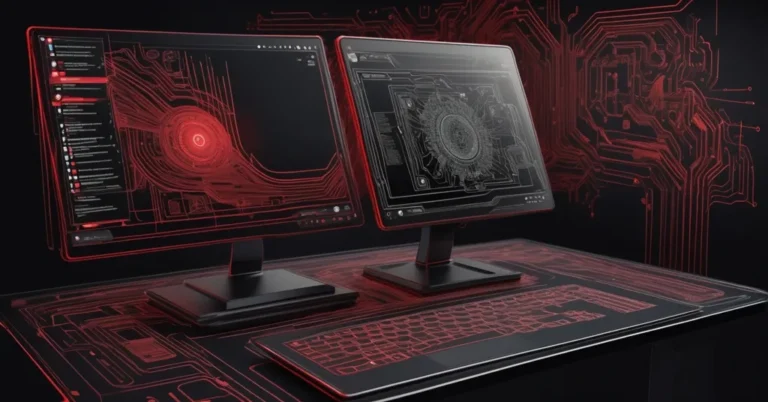Revitalizing Your Windows 10 PC: A Practical Windows 11 Upgrade Guide
When your trusted Windows 10 machine appears to fall short of the new Windows 11 system requirements, it can feel like you’re locked out of the latest digital advancements. Yet, many computers built over the last 15 years have hidden potential, waiting to be unleashed with a few smart adjustments. For business professionals and tech enthusiasts alike, these workarounds offer a cost‐effective way to boost security and performance without an immediate hardware overhaul.
Understanding the Hardware Requirements
Windows 11 comes with a list of prerequisites designed to enhance system security and efficiency. Among these requirements are a modern CPU, a Trusted Platform Module (TPM) version 2.0 (a chip that secures encrypted data), and the modern UEFI firmware interface that supports Secure Boot (a startup security feature). Microsoft is clear about its stance: “Microsoft has stated, forcefully, that it will not revise those hardware requirements.” However, if your system already meets key criteria like UEFI mode and Secure Boot, there are practical strategies to bypass restrictions related to CPU and TPM checks.
Method 1: Tweaking Your System Settings
This method involves a simple tweak to your system settings—specifically, adjusting the registry (the core database for Windows settings). By creating or modifying the key known as AllowUpgradesWithUnsupportedTPMOrCPU, you instruct the Windows 11 installation process to overlook the CPU and TPM version limits. Think of it like opening a hidden side door that lets your capable old PC join the new lineup.
- Check that your system is using UEFI mode and that Secure Boot is enabled. You can verify these settings with tools like Msinfo32.exe and Tpm.msc.
- Back up your system data to ensure you have a fallback if anything goes awry during the process.
- Open the registry editor and navigate to the relevant key location. Create or modify the key AllowUpgradesWithUnsupportedTPMOrCPU and set its value to enable the bypass.
- Proceed with the Windows 11 setup, confident that the installation will ignore certain hardware limitations.
Method 2: Harnessing the Power of Rufus Utility
If manually tweaking the registry isn’t your style—or if your system is still booting in Legacy BIOS mode—using a tool like Rufus provides an excellent alternative. Rufus, a free and open-source utility, simplifies the process by creating bootable USB installation media that automatically applies the necessary workarounds during setup. Updated versions (4.6 or later) of Rufus incorporate the adjustments needed to bypass Windows 11’s stringent CPU and TPM checks.
- Download the latest Windows 11 ISO file from a reliable source such as Microsoft’s official download page.
- Run Rufus and select the ISO file, ensuring that it’s configured to create bootable media while bypassing hardware restrictions.
- Follow the guided steps provided by Rufus to prepare your installation media.
- Restart your machine and boot from the USB to begin the Windows 11 installation process.
Navigating New CPU Restrictions
For users upgrading to Windows 11 version 24H2, an extra layer has been added: the CPU must now support SSE4.2 and PopCnt instructions. While this newer requirement might leave some older systems stranded, many machines still have the necessary capabilities if they meet the other basic criteria. It’s important to review these technical details when evaluating whether an upgrade is practical or if a hardware update might be in order.
Security and Setup Considerations
While bypassing some hardware checks offers a promising solution, it’s essential to consider the broader implications. Delaying automatic update downloads during the initial setup can smooth out the process, and you should always back up your data before initiating these changes to safeguard against unexpected issues.
“Those pesky restrictions prevent you from automatically upgrading to Windows 11…” – a reminder of the challenges many face when trying to extend the life of their current systems.
The debate between adhering to strict hardware regulations and repurposing older equipment underscores a larger conversation about technology evolution. For businesses operating on tight budgets or aiming to maximize existing investments, these workarounds can serve as a valuable stopgap while planning for long-term tech upgrades.
Key Takeaways & Questions
-
How can users upgrade Windows 10 PCs that fail Windows 11’s official hardware checks?
They can choose to tweak system settings by modifying the registry or create bootable installation media using Rufus, both of which bypass strict CPU and TPM restrictions.
-
What steps are necessary to tweak system settings for an upgrade?
First, verify that UEFI mode and Secure Boot are enabled. Then back up your data, open the registry editor, create or modify the key named AllowUpgradesWithUnsupportedTPMOrCPU, and proceed with the installation.
-
When should one opt for the Rufus utility method?
If you’re not comfortable tweaking the registry or your system runs on Legacy BIOS instead of UEFI, Rufus offers a user-friendly, automated solution.
-
How do UEFI, Secure Boot, and TPM impact the upgrade?
These elements are foundational for Windows 11 security and compatibility, ensuring that your system is protected while meeting the minimum requirements for an upgrade.
-
What additional challenges does Windows 11 24H2 introduce?
The newer version requires CPUs to support SSE4.2 and PopCnt instructions, adding another dimension that might affect very old PCs.
-
What precautions should be taken before upgrading?
Always back up your data, verify core system settings, and consider delaying automatic update downloads to ensure a smooth installation process.
Ultimately, these inventive approaches to bypassing Windows 11 hardware requirements reflect the dynamic interplay between stringent tech specifications and the innovation necessary to extend the life of existing systems. Embracing such pragmatic solutions can not only secure your current investment but also pave the way for smarter tech integrations in your business strategy.
